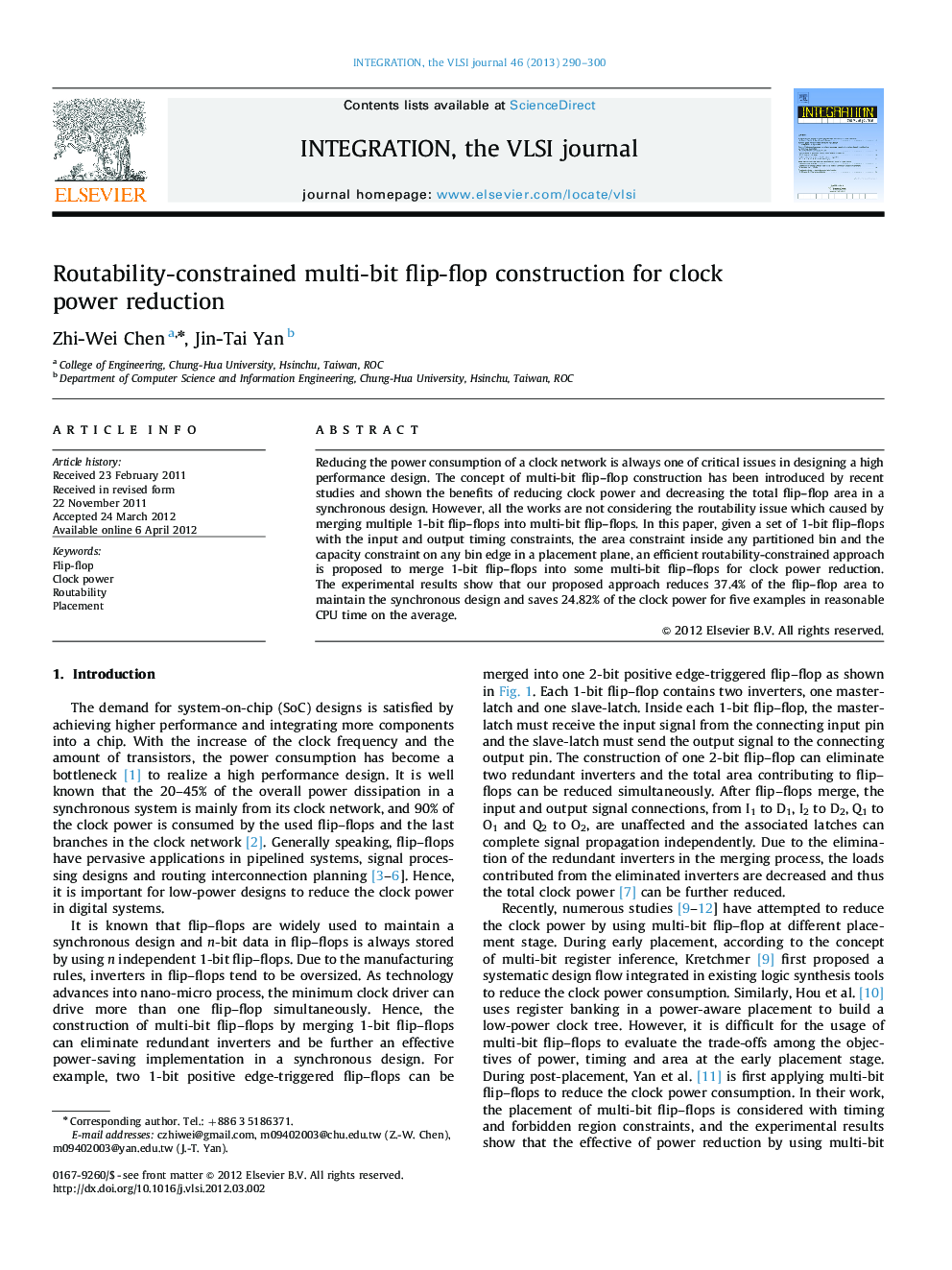| Article ID | Journal | Published Year | Pages | File Type |
|---|---|---|---|---|
| 538427 | Integration, the VLSI Journal | 2013 | 11 Pages |
Reducing the power consumption of a clock network is always one of critical issues in designing a high performance design. The concept of multi-bit flip–flop construction has been introduced by recent studies and shown the benefits of reducing clock power and decreasing the total flip–flop area in a synchronous design. However, all the works are not considering the routability issue which caused by merging multiple 1-bit flip–flops into multi-bit flip–flops. In this paper, given a set of 1-bit flip–flops with the input and output timing constraints, the area constraint inside any partitioned bin and the capacity constraint on any bin edge in a placement plane, an efficient routability-constrained approach is proposed to merge 1-bit flip–flops into some multi-bit flip–flops for clock power reduction. The experimental results show that our proposed approach reduces 37.4% of the flip–flop area to maintain the synchronous design and saves 24.82% of the clock power for five examples in reasonable CPU time on the average.
► Our work considers the routability issue in merging multiple 1-bit flip–flops. ► A routability-constrained approach is proposed for multi-bit flip–flop construction. ► Our approach reduces 37.4% of flip–flop area and saves 24.82% of clock power on the average.
